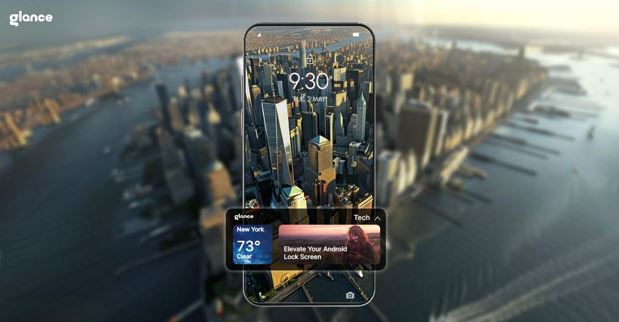What Are the Top Myths About Sun Damage Treatments in Orlando?
Sun exposure is an inevitable part of life in sunny places like Orlando, Florida. Whether you’re a tourist enjoying the theme parks or a local soaking in the sunshine, it’s easy to forget the damage that prolonged exposure to the sun can cause. Over time, harmful UV rays can lead to wrinkles, dark spots, and even skin cancer.
When it comes to treating sun damage, there are numerous misconceptions that can confuse people seeking solutions. These myths can lead to ineffective treatments or, in some cases, even harm. In this article, we’ll debunk the top myths about sun damage treatments and help you make informed decisions about protecting and healing your skin.
If you’re looking for the best Orlando Sun Damage Treatments, it’s essential to choose a service that offers scientifically backed solutions, personalized care, and experienced professionals. Let’s explore the common myths surrounding sun damage treatments in Orlando and set the record straight.
Myth 1: Sunscreen Is Only Needed When You’re Outside for a Long Time
One of the most common misconceptions about sun protection is that sunscreen is only necessary for long periods of outdoor activity. While it’s true that extended exposure to the sun increases the risk of skin damage, even short bursts of sunlight can be harmful over time. In fact, UV rays are present even on cloudy days and can penetrate windows. This means that spending a few minutes outside or sitting near a sunny window without sunscreen can contribute to skin aging and damage.
The Truth
Sunscreen should be applied every day, regardless of the weather or how long you plan to be outside. Experts recommend using a broad-spectrum sunscreen with an SPF of 30 or higher and reapplying it every two hours when outdoors. For those with sensitive skin or a history of sun damage, it’s even more important to make sunscreen a part of your daily routine.
Myth 2: Sun Damage Can Be Fully Reversed with Over-the-Counter Creams
Another widespread myth is that over-the-counter creams and lotions can completely reverse sun damage. Many products claim to reduce wrinkles, fade sunspots, and rejuvenate the skin. While these products can help improve the appearance of your skin, they often provide limited results when it comes to reversing more serious sun damage.
The Truth
While some topical treatments can help treat mild sun damage, such as lightening pigmentation or improving skin texture, they aren’t a miracle cure. In reality, reversing significant sun damage, like deep wrinkles, age spots, or pre-cancerous lesions, often requires professional intervention.
In Orlando, many dermatologists and skin specialists offer treatments like chemical peels, laser therapy, or microdermabrasion, which provide more effective solutions for deep sun damage. These treatments can promote skin regeneration, reduce pigmentation, and improve skin elasticity far more effectively than over-the-counter creams.
Myth 3: Dark Spots Are Permanent and Can’t Be Treated
Dark spots, or hyperpigmentation, are common side effects of sun exposure. These spots can appear as freckles, age spots, or larger, more uneven patches of skin. Many people believe these spots are permanent and nothing can be done to treat them. While these spots may be frustrating, they don’t have to be permanent.
The Truth
There are various treatment options available for dark spots caused by sun exposure. In Orlando, treatments like chemical peels, laser therapy, and intense pulsed light (IPL) can significantly reduce the appearance of dark spots by targeting and breaking down excess melanin in the skin. Additionally, topical treatments containing ingredients like retinoids, vitamin C, or hydroquinone can help lighten dark spots over time.
However, it’s important to note that patience is key. It may take several sessions or months of consistent use before you start to see significant improvement. Consulting with a dermatologist for the best sun damage treatments is the most reliable way to treat dark spots effectively.
Myth 4: Tanning Beds Are a Safe Alternative to Sun Exposure
Many people who want a tan believe that tanning beds are a safer alternative to sunbathing. Unfortunately, this is far from true. Tanning beds emit ultraviolet (UV) radiation, which is the same type of radiation that causes skin damage in the sun.
The Truth
In fact, tanning beds can be even more dangerous than natural sunlight because they often emit concentrated UV rays that can increase the risk of skin cancer and premature aging. The American Academy of Dermatology has reported that people who use tanning beds before the age of 35 are 75% more likely to develop melanoma, the deadliest form of skin cancer.
If you want to achieve a tan without the risks, consider using self-tanning products or spray tans, which provide a sun-kissed glow without the harmful effects of UV radiation.
Myth 5: Sun Damage Treatments Are Only for Older Adults
While sun damage becomes more noticeable as we age, it affects people of all ages, including teens and young adults. Many individuals assume that sun damage is only a concern for older adults, but the truth is that UV radiation can damage the skin at any age, and the effects can accumulate over time.
The Truth
Sun damage doesn’t discriminate based on age. Even if you’re in your 20s or 30s, prolonged sun exposure can lead to premature aging, dark spots, and an increased risk of skin cancer later in life. This is why it’s important to start sun protection and treatment early.
Treatments like laser therapy or chemical peels are not limited to older individuals. Young adults who have experienced sunburns or have spent significant time outdoors without sunscreen can also benefit from these services to address and prevent future damage.
Myth 6: Sun Damage Treatment Is Expensive and Only for the Wealthy
There’s a widespread belief that sun damage treatments are prohibitively expensive, which can discourage people from seeking professional care. However, many treatments are actually affordable, and with the right guidance, you can find options that fit your budget.
The Truth
The cost of sun damage treatments varies depending on the type of procedure and the severity of the damage. For example, a chemical peel or laser session may cost a few hundred dollars, while more advanced procedures like fractional CO2 lasers can be more expensive. However, many clinics offer packages or financing options, making these treatments accessible to a wider range of people.
Furthermore, the long-term benefits of professional treatments, such as preventing skin cancer and reducing the risk of wrinkles and other skin issues, can save you money in the future by reducing the need for more costly procedures down the road.
Myth 7: Sun Damage Treatments Can Be Done in One Session
Another common myth is that sun damage treatments are quick fixes that only require one session to yield permanent results. While certain treatments can offer visible improvements after one session, most procedures require multiple treatments over time to fully address and repair sun damage.
The Truth
Achieving optimal results from sun damage treatments typically involves multiple sessions, depending on the type of treatment and the level of damage. For instance, laser treatments may require several visits to see significant improvements, while chemical peels may need to be repeated every few weeks for the best outcomes. It’s important to follow your provider’s recommended treatment plan for lasting results.
Conclusion
Sun damage is a common concern in sunny places like Orlando, but it’s important to separate fact from fiction when it comes to treating it. From daily sunscreen use to professional treatments like chemical peels and laser therapy, there are effective solutions to address sun damage. If you’re looking for the best Orlando Sun Damage Treatments, be sure to consult with a qualified professional to determine the most appropriate options for your skin.
By debunking these myths and understanding the truth about sun damage, you can make more informed decisions to protect your skin and maintain its health for years to come.




